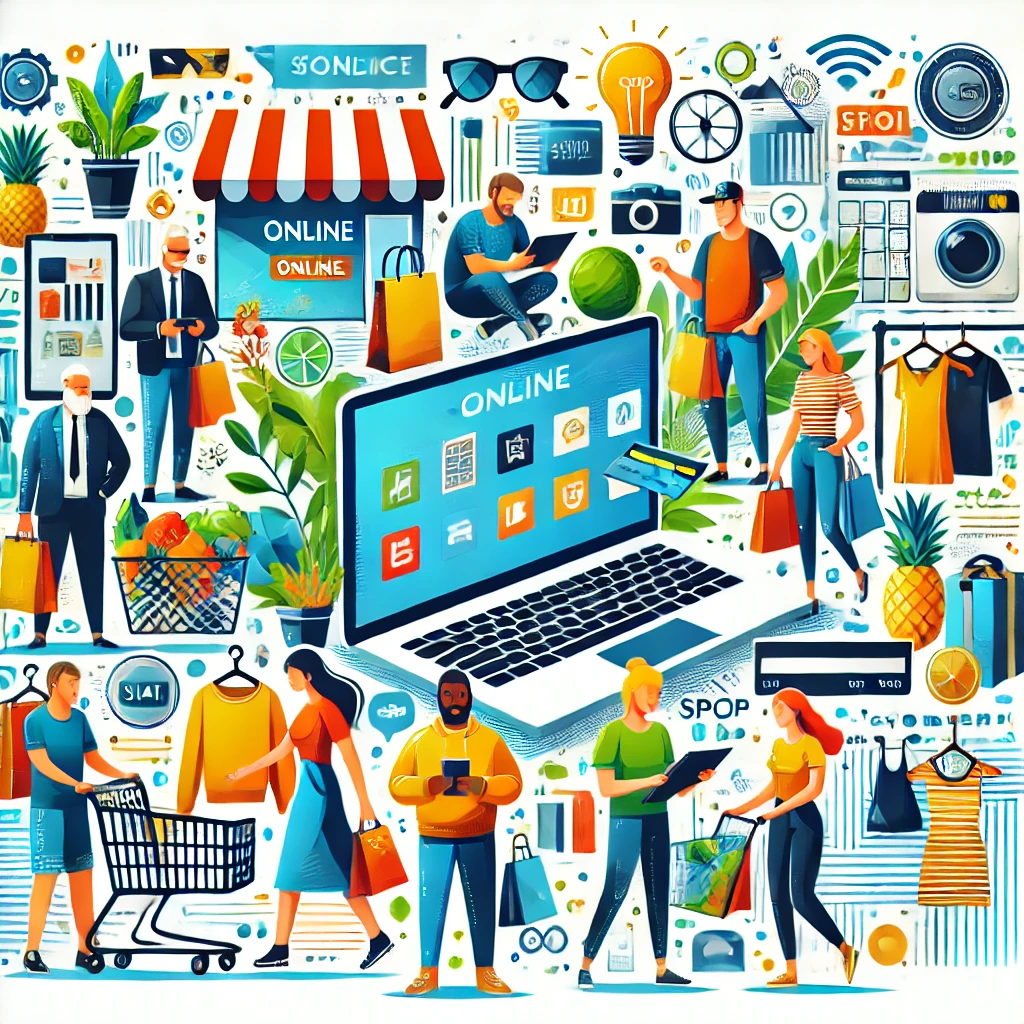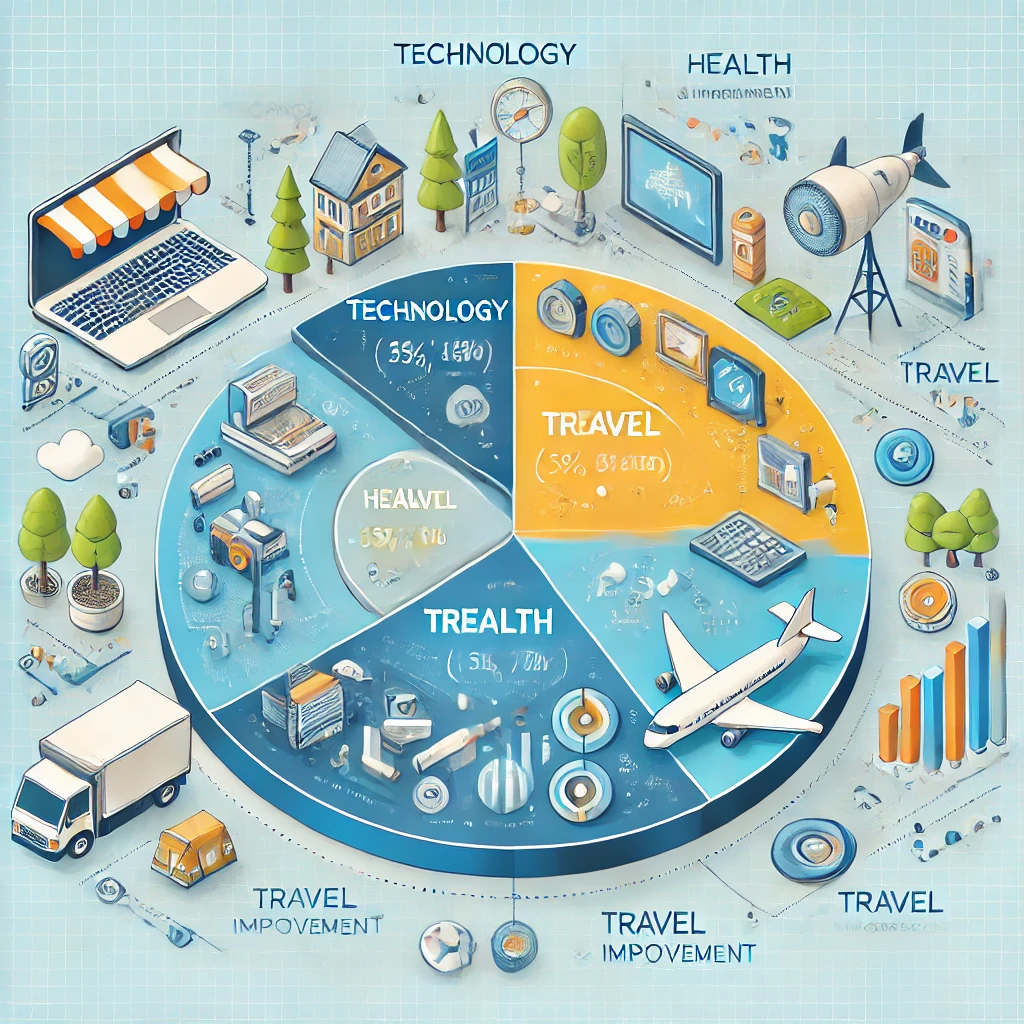Consumer Spending Trends: Insights Into Where Money Flows

In today’s fast-paced, ever-changing world, understanding consumer spending trends is more critical than ever. How and where people spend their money reveals not just their priorities but also the broader economic and cultural shifts shaping society. From tech gadgets to health-conscious choices, tracking these trends gives businesses, policymakers, and individuals a deeper insight into what truly drives the economy.
This article takes a closer look at where consumers are directing their dollars, what’s influencing these choices, and what these patterns mean for the future.
1. The Rise of Digital and Online Spending
It’s no surprise that online shopping has become a cornerstone of consumer behavior. The pandemic accelerated this trend, but even as life has returned to a semblance of normalcy, the convenience of online shopping continues to dominate. Consumers aren’t just shopping for clothes or electronics anymore; they’re ordering groceries, furniture, and even cars online.
Key Drivers:
- Convenience: People value saving time, and shopping online lets them avoid traffic and long checkout lines.
- Technology Integration: Tools like augmented reality (AR) allow consumers to try products virtually, boosting confidence in online purchases.
- Deals and Discounts: Retailers often offer online-exclusive discounts, driving more traffic to e-commerce platforms.
Popular Spending Categories:
- Electronics and gadgets
- Subscription services (streaming, fitness apps, meal kits)
- Groceries and household goods
For tips on saving while shopping online, check out Money-Saving Shopping Strategies.
2. Health and Wellness: A Priority Like Never Before
Consumer spending on health and wellness has skyrocketed. From gym memberships to organic food, people are investing in their physical and mental well-being. The focus isn’t just on avoiding illness but on leading a better quality of life overall.
Key Drivers:
- Post-Pandemic Health Awareness: The global health crisis reminded everyone of the importance of health.
- Mental Health Focus: Products and services catering to mental wellness, like meditation apps and therapy, are on the rise.
- Holistic Living: Consumers are increasingly buying into eco-friendly and sustainable health products.
Popular Spending Categories:
- Fitness equipment and memberships
- Organic and plant-based foods
- Mental wellness apps and subscriptions
For insights on balancing financial and health priorities, explore Health and Financial Wellness Connection.
3. Travel and Experiences: Spending Beyond Material Goods
After years of restrictions, people are prioritizing travel and unique experiences over material possessions. Whether it’s a family vacation, a solo adventure, or attending live events, experiences are making a strong comeback.
Key Drivers:
- Pent-Up Demand: Travel restrictions created a hunger for exploration.
- Social Media Influence: Platforms like Instagram drive the desire for unique and shareable experiences.
- Preference Shifts: Younger generations, in particular, value experiences over tangible goods.
Popular Spending Categories:
- Domestic and international travel
- Live concerts, festivals, and events
- Dining at unique or high-end restaurants
For tips on making travel more budget-friendly, visit Frugality and Minimalism Guide to Financial Freedom.
4. Technology and Gadgets: Staying Connected and Informed
Technology remains a dominant category in consumer spending, as new gadgets and innovations continue to captivate audiences. From smartphones to smart homes, people are willing to invest in tech that enhances their daily lives.
Key Drivers:
- Rapid Innovation: Frequent updates and new features keep consumers upgrading.
- Remote Work: Many are outfitting home offices with the latest tech to stay productive.
- Entertainment Needs: Streaming devices, gaming consoles, and high-quality audio systems remain in demand.
Popular Spending Categories:
- Smartphones and accessories
- Smart home devices
- Gaming and entertainment systems
To ensure smart spending on tech, explore Top Financial Tools and Apps.
5. Sustainability: Spending With a Conscience
Modern consumers are increasingly mindful of the environmental impact of their purchases. This shift has led to more spending on sustainable, eco-friendly products and services.
Key Drivers:
- Climate Awareness: Consumers are prioritizing brands that align with their values.
- Circular Economy: The popularity of second-hand shopping and upcycled goods is growing.
- Regulatory Changes: Governments are encouraging sustainable practices, indirectly influencing consumer choices.
Popular Spending Categories:
- Eco-friendly household items
- Electric vehicles (EVs)
- Second-hand or vintage clothing
For actionable strategies on balancing sustainability with saving money, check out Ethical Finance Practices for Wealth.

6. Education and Self-Improvement: Investing in the Future
The desire for personal and professional growth is driving increased spending on education and self-improvement. Whether it’s online courses, certifications, or self-help books, consumers are investing in themselves.
Key Drivers:
- Career Advancement: Many professionals are reskilling to adapt to changing job markets.
- Accessible Learning: Online platforms make education more affordable and convenient.
- Personal Growth: From language apps to leadership training, self-improvement is a growing priority.
Popular Spending Categories:
- Online courses and certifications
- Coaching and mentorship programs
- Books and educational subscriptions
For guidance on aligning financial goals with personal development, visit Financial Planning Strategies for a Secure Future.
7. Home Improvement: Making the Most of Living Spaces
With more people spending time at home, either working remotely or simply valuing comfort, home improvement has become a significant spending trend.
Key Drivers:
- Remote Work: Home offices are now essential.
- Real Estate Boom: Homebuyers are investing in renovations.
- DIY Culture: People are taking on home projects themselves.
Popular Spending Categories:
- Furniture and décor
- Home office equipment
- Landscaping and outdoor spaces
For tips on saving while upgrading your living space, see Real Estate and Homeownership Guide.
What These Trends Mean for the Future
The way people spend money offers a window into their priorities and values. As technology, sustainability, and health continue to take center stage, businesses must adapt to these evolving demands. For consumers, staying aware of these trends can help with smarter financial planning and decision-making.
From splurging on experiences to investing in personal growth, the modern consumer is making choices that go beyond material goods. These shifts highlight a broader cultural evolution, where value is increasingly placed on quality of life, innovation, and sustainability.
To stay on top of your finances while adapting to these trends, visit Money and Finance Update for expert advice and tools.
